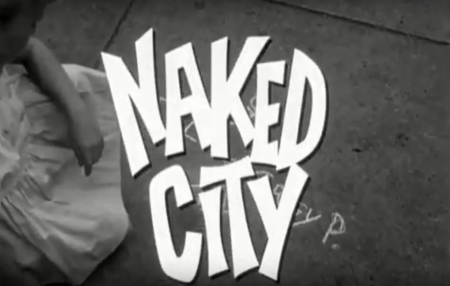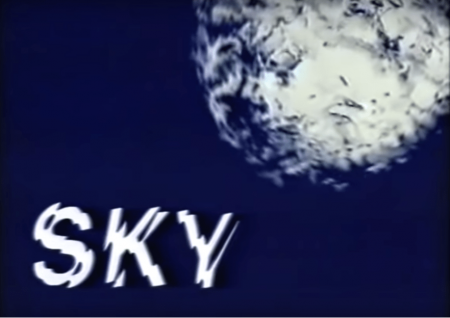“Seven,” sighed the post-graduate admissions tutor in the campus corridor. This integer clearly caused unhappiness. I didn’t know if it was an irrational hatred of odds in general or primes in particular, or bad life experiences with samurai, brides or brothers. “The average number of people likely to read a postgraduate dissertation,” they added, specifying the cause of their disenchantment.
Now, for me, seven didn’t sound like that bad a deal. Two supervisors, an independent assessor, proof-reader, and maybe three other people who might access it from the millions ranked in the halls of academe. After all, in 1981, communicating about a television show I liked meant me phoning Tony, Steve, Paul, John, Russell and maybe Kelvin (if I could afford the transatlantic call). That was only six. Seven still strikes me as a good deal.
Since then technology’s changed. I’ve changed. But different scales of audience and the best ways to find them still fascinates me. Is there an optimum – balancing quantity in terms of reach with receptive quality of those who may hear the music?
My current thoughts are based around a small problem no bigger than a Lego barrel brick – the distribution of a facile thought concerning my present television obsession: ‘Hey! Isn’t Naked City (1958-1959/1960-1962) great?’ I’ll explain the show later, suffice to say it features no more nudity than the later spin-off series about the chef (1999-2001) and far less than the pilot about the civil servant (1975). But what’s my best route to a receptive market?
Since making six phone calls in 1981, my ‘reach’ peaked at 3.4 million for the BBC Two broadcast Return of the Goodies (2005), a programme I helped develop to celebrate the 1970s comedy series frequently confused with Elizabeth R (1971). Of that, 1.7 million probably hadn’t switched off after the Gardeners’ World (1968-) special while another million tuned in early for Phil Collins on Room 101 (1994-2007,2012-2018).
Given that’s probably my biggest reach, what slice of that 3.4 million would translate into sales for my 600 page book about the show, Super Chaps Three? As it turns out, about 200 – that’s 0.006% of the interest. Of course, a vast tome of obscure production details and reams of VT numbers is a niche item… so I understand that different levels of ‘quality’ attract different catchments.
387, 388…
Returning to my previous subject of effective communication, the first academic my wife and I ever met at our first academic conference (Spaces of Television: 2013) was Dr Victoria Byard. Technically we met her in the car park before registering. She was kind, looked after us, dined with us and was one of the people who sort of ensured that we weren’t lost and knew what was going on. In addition to excellent people skills, she likes Doctor Who (you know the dates) and buys us pizza which makes her a very dear friend.
Rather than ‘Hey! Isn’t Sky (1975) brilliant?’, Victoria’s paper offered true value under the title ‘Telefantastic spaces of Television: Sky’. First of all, I was charmed that anyone should be interested in a comparatively obscure fantasy serial made before they were born, but which I had fond memories of seeing on its original networking. Secondly, I was impressed that she spoke to about forty people who seemed receptive and asked good questions. And if one person subsequently ordered the DVD, that was a 2.5% success rate which – compared to my 0.006% – was stratospheric!
In fact, I was more impressed with this presentation and its reach than I was with the fact that the article on Sky that we ran in the fanzine TimeScreen in 1991 would have reached 2000 people, 1750 of whom probably already knew about it and none of whom could rush out to buy the DVD. We were publishing for a niche market – it’s what we expected. Victoria was spreading the word to fresh ears.
Since then, I’ve learnt from numerous academics about how they can circulate their own thoughts over and above the conference papers I relished that day. I’ve discovered the pros and cons of journal articles compared to book chapters, and dissemination of arguments in everything from novels to remaking lost episodes of Doctor Who and having them distributed by the BBC.
One intriguing notion is of secreting your interest in a hot topic such as ‘gender in storytelling’ or ‘illegal economies’. Some years back, I sneaked 50,000 words about the changes in scheduling on British television across five decades out to the readers of Doctor Who Magazine (current circulation: c. 20,000) simply by expressing my thoughts via examples of TV’s favourite Time Lord. Nobody twigged. People read it and reacted positively. Job done.
784, 785…
So, how to communicate with other devotees of Naked City? I am not on Facebook. I don’t get Twitter. #DontUseHashtagsEither. A post on the ‘archive television’ section of the Doctor Who forum Gallifrey Base elicited 18 views and zero responses, whereas the TV/film enthusiast platform Roobarbs netted 444 views and six rather interesting replies. I can’t bring myself to do a podcast – even if I did, would it find an audience? One acquaintance was disheartened when his online offerings for an established 1960s cult classic with existing fanbase elicited an average of 17 plays and only one e-mail (mine). Meanwhile, another associate was disappointed by ‘only’ 19,000 YouTube views of a documentary that he had produced on another cult favourite. I guess it’s all relative.
If it hadn’t been for academia, I’d never have considered blogging. Kim, Toby and their software that can look into your soul tell me that my first blog may have been seen by around 2000 people (20 of whom were probably me). And I think that’s pretty good. Thanks Kim! Thanks Toby!
963, 964…
Now, because Kim’s explained to me that effective blogs don’t exceed 1000 words, I can’t explain about Naked City after all. Sorry.
But thank you for making this blog’s readership one more than it was previously.
Andrew Pixley is a retired data developer. For the last 30 years he’s written about almost anything to do with television if people will pay him – and occasionally when they won’t. He seriously suspects that nobody reads to the end of his blogs, let alone this biog bit at the bottom. Why not prove him wrong? A lot of people do.









kia ora Andrew; Well, I have read it … way down in the South Pacific. Until recently, I participated in these strange rituals which are part of academic publication and conference participation. Now I write without citations nor references … oh, the freedom!
Keep up the good work.
Bless you Geoff. Very kind and thoughtful of you.
I spent much of the middle part of the year writing about “Monty Python’s Flying Circus” (a series which I still love)… but it came at a bad time because of other factors and although the research was thrilling, it did leave me wiped out (four 70,000 sets of viewing notes in four months). As such, I treated myself to a couple of months out after I’d delivered it… and during that time I was asked to write a fanzine piece. Which I got a massive kick out of doing, because i reminded me of the fun and freedom that I loved so much when I first started writing in the 1980s.
KIm’s been massively encouraging, Toby’s layouts and presentation are super… and it’s a lot of fun for me to write (even if others may not find it fun to read). I think it’s great having a platform about television as a whole. While I know of various outlets for material on specific series, I do miss – for example – the WTVA/BFI magazine “PrimeTime” from the 1980s/1990s. Bauer’s “TV Years” has given me a similar vibe of late and allowed more of a celebration of popular television as a whole, so that’s been fun as well. But knowing that CST is here to just throw out a few ideas and notion or a ‘Hey! Isn’t brilliant?’ in case somebody else gets a kick out of it too is a lot of fun… My gratitude again to Kim and Toby.
All the best
Andrew
Found you and read to the bottom!
Bless you Karoline… and that’s because you’re an exceptionally brilliant person, and my life has been all the better for you being part of it across the years.
All the best
Andrew